Potrebujeme váš súhlas na využitie jednotlivých dát, aby sa vám okrem iného mohli ukazovať informácie týkajúce sa vašich záujmov. Súhlas udelíte kliknutím na tlačidlo „OK“.
ASTM E2356-14
Standard Practice for Comprehensive Building Asbestos Surveys
Automaticky preložený názov:
Štandardná prax na rozsiahlych stavebných azbest prieskumy
NORMA vydaná dňa 15.1.2014
Informácie o norme:
Označenie normy: ASTM E2356-14
Poznámka: NEPLATNÁ
Dátum vydania normy: 15.1.2014
Kód tovaru: NS-45120
Počet strán: 53
Približná hmotnosť: 159 g (0.35 libier)
Krajina: Americká technická norma
Kategória: Technické normy ASTM
Kategórie - podobné normy:
Anotácia textu normy ASTM E2356-14 :
Keywords:
ICS Number Code 91.100.40 (Products in fibre-reinforced cement)
Doplňujúce informácie
| Significance and Use | ||||||||||||||||
|
4.1 Management of asbestos-containing materials in buildings and facilities requires knowledge of the location, type, quantity, and condition of the material. The more complete and accurate the information available, the more appropriate and cost-effective are the control measures used to reduce possible exposure to airborne asbestos fibers. This is true whether the asbestos-containing materials remain undisturbed and completely intact, are selectively removed for maintenance or prior to renovation, or are removed to the greatest extent feasible before demolishing the building or facility. 4.2 This practice describes three types of surveys that support different objectives. These are the Baseline Survey, the Project Design Survey, and the Pre-Construction Survey. 4.2.1 The Baseline Survey is a building-wide or facility-wide inspection that provides a general sense of the overall location, type, quantity, and condition of asbestos-containing materials present. It is thorough in that most accessible functional spaces are inspected and bulk samples taken of suspect materials observed. The baseline survey provides information for long-term management of asbestos-containing materials and prioritization of response actions. The presence of asbestos in suspect materials may be assumed or presumed in some cases without bulk samples being taken or analyzed. However, the baseline survey is unobtrusive in that samples are not taken where doing so would result in objectionable damage to surfaces or where institutional barriers preclude access. In a baseline survey, destructive testing is avoided. Posting of signs and labels required for compliance with OSHA regulations would use the information generated during a Baseline Survey. 4.2.2 The Project Design Survey is
more focused than a Baseline Survey and is used to provide
information to the Project Designer for preparing abatement plans
and specifications. The locations inspected are limited to the
areas that will be affected by the abatement project. If the
project is being done prior to renovation or demolition, the
construction plans or at least a clear statement of the scope of
the renovation or demolition work are required for a proper Project
Design Survey. Destructive testing is often required for a Project
Design Survey. The presence of asbestos in suspect materials is
always confirmed in a Project Design Survey rather than being
assumed or presumed. Other information required for the Project
Design is collected during the survey.
4.2.3 The Pre-Construction Survey is performed in anticipation of renovation or demolition where a Baseline Survey has not been conducted and there is no information, or insufficient information, as to the existence of asbestos-containing materials within the planned limits of construction. The Pre-Construction Survey requires destructive testing if concealed spaces are to be breached during construction. If asbestos-containing materials are found, a Project Design Survey is conducted to provide information for preparing the plans and specifications. The Pre-Construction Survey satisfies the EPA NESHAP requirements for renovation or demolition to “thoroughly inspect the affected facility” or the requirements of governmental agencies for issuance of a building permit. 4.3 The inter-relationships among the three types of surveys and with other ASTM asbestos control standards is shown in 4.4 This practice emphasizes the concept that a Comprehensive Building Asbestos Survey consists of more than the collection and analysis of samples, and the report is more than a compilation of laboratory results. It is important to inspect as many functional spaces as possible and to document the reasons why certain functional spaces were not inspected and locations where no suspect materials were observed and, consequently, no samples were taken. Reasons might include access limitations, the absence of materials to sample, the existence of information from previous surveys, or the availability of reliable documentation such as Material Safety Data Sheets. 4.5 A Comprehensive Building Asbestos Survey is not limited to the class of materials commonly referred to as asbestos-containing building materials (ACBM), defined in the AHERA regulations as “... found in or on interior structural members or other parts of a building.” Items that are difficult to distinguish as such may include cooling towers, laboratory hoods, gaskets, chalkboards, and other articles. These may be installed in, attached to, or adjacent to the building or facility but are not as clearly a part of the building or facility as fireproofing or floor tile. Nonetheless, such items still fall within the scope of an asbestos management program and therefore are addressed in this practice. Locations outside the building, in particular equipment in industrial facilities and power plants, and crawl spaces underneath the building are within the scope of a Comprehensive Building Asbestos Survey. 4.6 This practice is intended to be used by individuals who are conducting a Comprehensive Building Asbestos Survey for the owner or manager of a building or facility under a contractual arrangement for services as well as by employees of the owner or manager. If the individual is conducting the survey under a contractual arrangement (which may be with the firm employing the individual), the owner or manager of the building is still responsible for certain activities as described in this practice. |
||||||||||||||||
| 1. Scope | ||||||||||||||||
|
1.1 This practice describes procedures for conducting comprehensive surveys of buildings and facilities for the purpose of locating, identifying, quantifying, and assessing asbestos-containing materials. 1.2 The results of a Comprehensive Building Asbestos Survey are intended to be used for ongoing management of asbestos-containing materials, including Operations and Maintenance (O&M), removal, and other response actions. This includes response actions associated with renovations. A Comprehensive Building Asbestos Survey is also intended to provide information required for removal of asbestos-containing materials prior to demolition of a building or facility. 1.3 This practice discusses three types of surveys: Baseline Surveys, Project Design Surveys, and Pre-Construction Surveys. 1.4 This practice discusses the following activities for each of the above types of surveys: 1.4.1 Planning the survey to meet defined objectives; 1.4.2 Obtaining and reviewing information on the building or facility including previous surveys and response actions; 1.4.3 Conducting the physical activities of inspecting the premises and collecting bulk samples of suspect materials; 1.4.4 Analyzing the bulk samples for asbestos type and content; 1.4.5 Assessing the Current Condition and Potential for Disturbance of asbestos-containing materials; and 1.4.6 Preparing a report that includes a narrative discussion of the findings, tabulations of inspection, sampling and analysis results, graphical depiction of the areas inspected, and the results of the assessment. 1.5 A Comprehensive Building Asbestos Survey provides sufficient information about the asbestos-containing materials in a building or facility for purposes of a real property transaction. In situations where the amount of information required by a party to the transaction is minimal, a Limited Asbestos Screen (see Practice E2308) may suffice in place of the Comprehensive Building Asbestos Survey. 1.6 This practice does not include air sampling or surface (dust) sampling for purposes of evaluating a potential exposure hazard from airborne asbestos fibers. 1.7 Warning—Asbestos fibers are acknowledged carcinogens. Breathing asbestos fibers can result in disease of the lungs including asbestosis, lung cancer, and mesothelioma. Precautions in this practice should be taken to avoid creating and breathing airborne asbestos particles from materials known or suspected to contain asbestos. See 2.2 for regulatory requirements addressing asbestos. 1.8 The values stated in SI units are to be regarded as standard. The values given in parentheses are mathematical conversions to inch-pound units that are provided for information only and are not considered standard. 1.9 This standard does not purport to address all of the safety concerns, if any, associated with its use. It is the responsibility of the user of this standard to establish appropriate safety and health practices and determine the applicability of regulatory limitations prior to use. |
||||||||||||||||
| 2. Referenced Documents | ||||||||||||||||
|
Podobné normy:
Historická
1.11.2009
Historická
1.11.2011
Historická
1.11.2009
Historická
1.11.2012
Historická
15.12.2012
Historická
1.11.2012
Odporúčame:
Aktualizácia technických noriem
Chcete mať istotu, že používate len platné technické normy?
Ponúkame Vám riešenie, ktoré Vám zaistí mesačný prehľad o aktuálnosti noriem, ktoré používate.
Chcete vedieť viac informácií ? Pozrite sa na túto stránku.


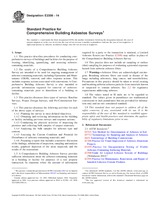
 ASTM C1125-89(2009)..
ASTM C1125-89(2009)..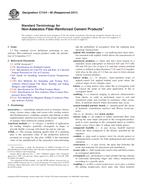 ASTM C1154-06(2011)..
ASTM C1154-06(2011)..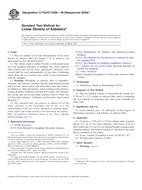 ASTM C1162/C1162M-90..
ASTM C1162/C1162M-90..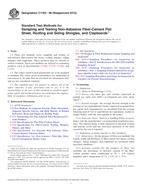 ASTM C1185-08(2012)..
ASTM C1185-08(2012).. ASTM C1186-08(2012)..
ASTM C1186-08(2012)..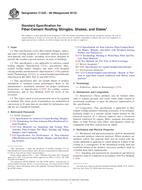 ASTM C1225-08(2012)..
ASTM C1225-08(2012)..
 Cookies
Cookies
